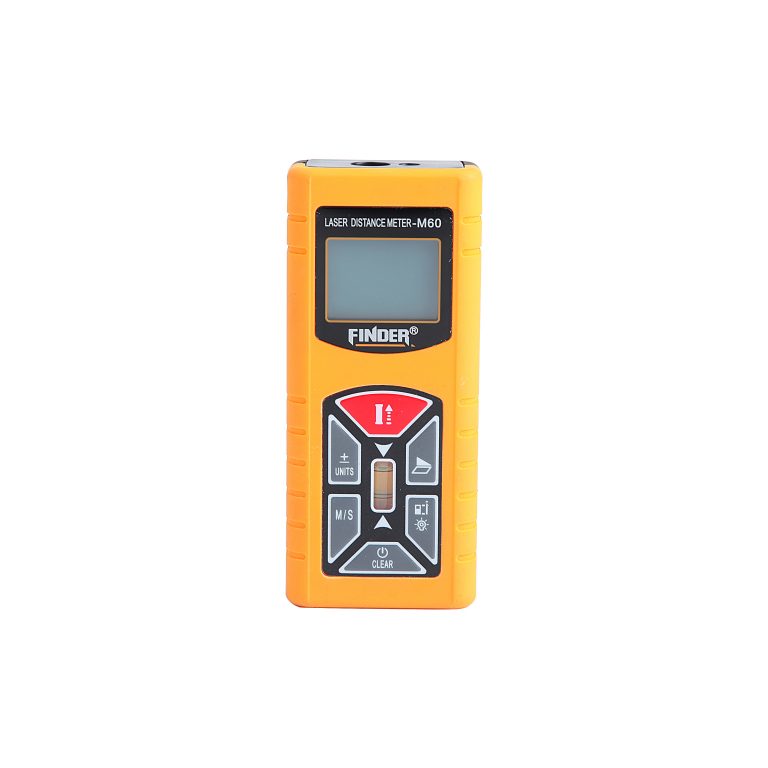A comprehensive analysis of the principle and working principle of laser measuring instruments. Laser measuring instruments are high-precision measuring equipment widely used in industrial manufacturing, scientific research, and other fields.

It uses laser beams for measurement, with the advantages of high sensitivity and accuracy, and is widely used in fields such as size measurement, contour detection, and displacement measurement.
1、 Working principle of laser measuring instrument:
1. Emitting laser beam:
The laser measuring instrument emits a coherent beam of light through a laser emitter, which has high brightness and narrow beam width.
2. Focusing and expanding the beam:
The laser emitter adjusts the focal length and angle of the beam to accurately align it with the object being measured.
3. Beam irradiation:
After focusing and expanding, the beam is directed onto the object being measured, forming a bright line.
4. Reflection and scattering of light beams:
The light beam on the tested object will undergo reflection and scattering, with some rays continuing to return along the original path and others scattering in other directions.
5. Beam reception:
The laser measuring instrument receives the returned beam of light through a receiver and converts the intensity signal into an electrical signal.
6. Signal processing:
The receiver processes the received light intensity signal to determine various parameters of the measured object, such as size, shape, etc.
7. Data display and recording:
The processed data can be displayed on a display screen and recorded and stored through devices such as computers.
2、 Application fields of laser measuring instruments
1. Dimensional measurement:
Laser measuring instruments can be used to measure size parameters such as length, width, and height of objects, and are widely used in size control and quality inspection in industrial manufacturing.
2. Shape measurement:
By processing the measured object with laser irradiation and reflection, the contour data of the object can be obtained, achieving accurate measurement of the object’s shape.
3. Displacement measurement:
By utilizing the high precision and sensitivity of laser measuring instruments, it is possible to measure the displacement of objects, such as the displacement and vibration amplitude during mechanical motion.
4. Surface quality inspection:
Laser measuring instruments can be used to detect parameters such as surface flatness and flatness of objects, for the evaluation and quality inspection of surface quality.
5. Automation control:
Combining laser measuring instruments with other equipment can achieve an automated control system for size control and automatic adjustment on production lines.
3、 Advantages and disadvantages of laser measuring instruments
1. Advantages:
(1) High precision:
Laser measuring instruments have high-precision measurement capabilities and can meet the needs of precise measurement.
(2) Non contact measurement:
The laser measuring instrument does not need to be in direct contact with the measured object, avoiding damage and impact on the measured object.
(3) High speed measurement:
Laser measuring instruments can complete a large number of measurements in a short period of time, improving production efficiency.
4) Wide adaptability:
Laser measuring instruments are suitable for measuring objects of various materials and shapes.
2. Disadvantages:
(1) High price:
The manufacturing cost of laser measuring instruments is high and the price is expensive.
(2) High environmental requirements:
Laser measuring instruments have high requirements for temperature and lighting in the working environment.
(3) Need to have a certain degree of reflectivity towards the tested object:
Laser measuring instruments require a certain degree of reflectivity to measure the object being measured.
In summary, laser measuring instruments, as high-precision measurement equipment, have wide applications in industrial manufacturing, scientific research, and other fields.
By emitting, illuminating, and receiving laser beams, laser measuring instruments can achieve precise measurement of parameters such as size, shape, and displacement.
Although it has the disadvantages of high price and high environmental requirements, its advantages have made it widely used and recognized in the field of modern measurement.
